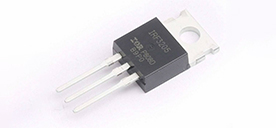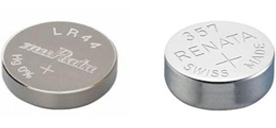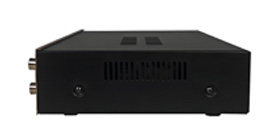Optical devices: the key to communications, medical and industry
2024/2/23 10:04:04
Views:
In the vast sky of today's science and technology, optical devices shine like stars, attracting people's attention with their special charm and wide range of applications. This article will take you to explore the diversity of optical devices and understand their types, principles and applications in technology. Let's embark on this optical technology journey together.
Optical devices literally refer to devices used to control, convert or detect light signals. There are many types of them, but they can be roughly divided into imaging devices, modulation devices, spectroscopic devices, detection devices and fiber optic devices. These devices perform their own duties and together form an important part of optoelectronic technology.
Optical devices are divided into two categories: active devices and passive devices:
Active devices require external energy to drive and can convert electrical signals into optical signals or optical signals into electrical signals. For example, lasers, phototubes, photomultipliers, photoresistors, photodiodes, phototransistors, photovoltaics, etc. In optical communication systems, active devices play a vital role in realizing the mutual conversion of light and electricity and ensuring that information can be transmitted in optical fiber networks.
Passive components do not require an external power supply to work and are mainly used to guide, distribute, filter or modulate optical signals. For example, various lenses, reflectors, fiber optic connectors and beam splitters, etc. Passive components play a fundamental role in optical communication systems, ensuring the effective transmission and processing of optical signals.
Imaging devices, such as lenses and microscopes, are among the most well-known optical devices. They can capture images of objects, magnify tiny details, and expand human vision. For example, a digital camera contains a lens group composed of multiple lenses that precisely control the focus of light so that the image is clearly visible.
Modulation devices are like translators of light, capable of encoding and decoding light waves. The liquid crystal unit in an LCD display is a typical example. By changing the arrangement of liquid crystal molecules, modulation devices can control the phase of light waves and display different colors and patterns.
An optical splitter acts like a river splitter, splitting a beam of light into different wavelengths or directions. Prisms and gratings are the most common spectroscopic devices. They use the refraction and diffraction phenomena of light to decompose white light into a rainbow-like spectrum or separate light of specific wavelengths, providing a powerful tool for scientific research.
The detection device is a scout of light, capable of sensing the presence of light and converting it into an electrical signal. Photodiodes and photomultiplier tubes are representatives of this type of device. They can capture weak light and convert it into electric current, providing important technical support for night vision equipment, astronomical observation, medical imaging and other fields.
Fiber optic devices are the transportation tools on the information highway. Optical fibers can not only transmit optical signals, but also process and process data. Optical fiber communication technology has become one of the main means of information transmission in modern society due to its high speed, large capacity and strong anti-interference characteristics.
There are a series of profound physical principles behind these optical devices. The focusing effect of the lens depends on the law of refraction of light; the color change of the liquid crystal display is based on the birefringence characteristics of light; the light splitting ability of the prism and grating comes from the law of refraction and diffraction of light; the sensitivity of the photodetector depends on the photoelectric effect. These principles not only explain how optical devices work, but also provide a theoretical basis for their design and optimization.
In terms of scientific and technological applications, optical devices play an irreplaceable role. In medicine, endoscopes use optical fibers to transmit images of the body back to external monitors, making minimally invasive surgeries possible. In the communications industry, optical fiber networks connect all parts of the world, enabling fast and convenient information transmission. In environmental monitoring, lidar can accurately measure the content of atmospheric pollutants and provide data support for environmental protection.
The development of optical devices has also given rise to the emergence of new technologies. Quantum communication uses the characteristics of quantum states to achieve absolute security in information transmission; the miniaturization of photonic integrated circuits has greatly improved processing speed and energy efficiency; virtual reality and augmented reality technology are changing the way of entertainment and education.
To sum up, optical devices are an important part of the development of modern science and technology. With their unique functions and wide range of applications, they are leading human society towards a brighter future. Whether in laboratory research or in daily life applications, optical devices illuminate the road to human wisdom in their own unique way.
In this radiant world, optical devices are like stars of science and technology. With their endless charm and unlimited potential, they bring endless surprises and conveniences to mankind. From simple lenses to complex fiber optic communication systems, the world of optical components is diverse and dynamic. They are not only the foundation of modern optical research, but also an important pillar of the information age.
Active devices and passive devices each have their own unique functions and applications. Active devices rely on external energy to drive and can realize the mutual conversion of light and electricity, such as lasers and photovoltaics; while passive devices do not require external energy to work and are mainly used to guide, distribute and modulate optical signals, such as lenses and light splitters. device. The different functions and working principles of these devices together form the core of optoelectronic technology.
The application of optical devices has penetrated into various fields. In medicine, optical devices are widely used in diagnosis and treatment, such as endoscopes and laser surgery systems; in the field of communications, optical fiber technology has become the mainstream means of information transmission; in environmental monitoring, optical sensors can accurately detect the atmosphere and water pollution. The continuous development of optical devices is also promoting the birth of new technologies, such as quantum communications and photonic integrated circuits, which will bring new breakthroughs to the development of future science and technology.
In the world of optical devices, physical principles and technical applications are closely linked. The imaging effect of the lens depends on the law of refraction of light; the working principle of the liquid crystal display is based on the birefringence characteristics of light; the light splitting effect of the prism and grating is derived from the law of light diffraction; the sensitivity of the photodetector depends on the photoelectric effect. These principles not only explain how optical devices work, but also provide important references for their design and optimization.
In short, optical devices are an important part of modern technology, and their applications in information transmission, medical diagnosis, environmental monitoring and other fields are constantly expanding and deepening. With the continuous advancement and innovation of technology, it is believed that optical devices will play an increasingly important role in the future and bring more progress and development to human society.
Optical devices literally refer to devices used to control, convert or detect light signals. There are many types of them, but they can be roughly divided into imaging devices, modulation devices, spectroscopic devices, detection devices and fiber optic devices. These devices perform their own duties and together form an important part of optoelectronic technology.
Optical devices are divided into two categories: active devices and passive devices:
Active devices require external energy to drive and can convert electrical signals into optical signals or optical signals into electrical signals. For example, lasers, phototubes, photomultipliers, photoresistors, photodiodes, phototransistors, photovoltaics, etc. In optical communication systems, active devices play a vital role in realizing the mutual conversion of light and electricity and ensuring that information can be transmitted in optical fiber networks.
Passive components do not require an external power supply to work and are mainly used to guide, distribute, filter or modulate optical signals. For example, various lenses, reflectors, fiber optic connectors and beam splitters, etc. Passive components play a fundamental role in optical communication systems, ensuring the effective transmission and processing of optical signals.
Imaging devices, such as lenses and microscopes, are among the most well-known optical devices. They can capture images of objects, magnify tiny details, and expand human vision. For example, a digital camera contains a lens group composed of multiple lenses that precisely control the focus of light so that the image is clearly visible.
Modulation devices are like translators of light, capable of encoding and decoding light waves. The liquid crystal unit in an LCD display is a typical example. By changing the arrangement of liquid crystal molecules, modulation devices can control the phase of light waves and display different colors and patterns.
An optical splitter acts like a river splitter, splitting a beam of light into different wavelengths or directions. Prisms and gratings are the most common spectroscopic devices. They use the refraction and diffraction phenomena of light to decompose white light into a rainbow-like spectrum or separate light of specific wavelengths, providing a powerful tool for scientific research.
The detection device is a scout of light, capable of sensing the presence of light and converting it into an electrical signal. Photodiodes and photomultiplier tubes are representatives of this type of device. They can capture weak light and convert it into electric current, providing important technical support for night vision equipment, astronomical observation, medical imaging and other fields.
Fiber optic devices are the transportation tools on the information highway. Optical fibers can not only transmit optical signals, but also process and process data. Optical fiber communication technology has become one of the main means of information transmission in modern society due to its high speed, large capacity and strong anti-interference characteristics.
There are a series of profound physical principles behind these optical devices. The focusing effect of the lens depends on the law of refraction of light; the color change of the liquid crystal display is based on the birefringence characteristics of light; the light splitting ability of the prism and grating comes from the law of refraction and diffraction of light; the sensitivity of the photodetector depends on the photoelectric effect. These principles not only explain how optical devices work, but also provide a theoretical basis for their design and optimization.
In terms of scientific and technological applications, optical devices play an irreplaceable role. In medicine, endoscopes use optical fibers to transmit images of the body back to external monitors, making minimally invasive surgeries possible. In the communications industry, optical fiber networks connect all parts of the world, enabling fast and convenient information transmission. In environmental monitoring, lidar can accurately measure the content of atmospheric pollutants and provide data support for environmental protection.
The development of optical devices has also given rise to the emergence of new technologies. Quantum communication uses the characteristics of quantum states to achieve absolute security in information transmission; the miniaturization of photonic integrated circuits has greatly improved processing speed and energy efficiency; virtual reality and augmented reality technology are changing the way of entertainment and education.
To sum up, optical devices are an important part of the development of modern science and technology. With their unique functions and wide range of applications, they are leading human society towards a brighter future. Whether in laboratory research or in daily life applications, optical devices illuminate the road to human wisdom in their own unique way.
In this radiant world, optical devices are like stars of science and technology. With their endless charm and unlimited potential, they bring endless surprises and conveniences to mankind. From simple lenses to complex fiber optic communication systems, the world of optical components is diverse and dynamic. They are not only the foundation of modern optical research, but also an important pillar of the information age.
Active devices and passive devices each have their own unique functions and applications. Active devices rely on external energy to drive and can realize the mutual conversion of light and electricity, such as lasers and photovoltaics; while passive devices do not require external energy to work and are mainly used to guide, distribute and modulate optical signals, such as lenses and light splitters. device. The different functions and working principles of these devices together form the core of optoelectronic technology.
The application of optical devices has penetrated into various fields. In medicine, optical devices are widely used in diagnosis and treatment, such as endoscopes and laser surgery systems; in the field of communications, optical fiber technology has become the mainstream means of information transmission; in environmental monitoring, optical sensors can accurately detect the atmosphere and water pollution. The continuous development of optical devices is also promoting the birth of new technologies, such as quantum communications and photonic integrated circuits, which will bring new breakthroughs to the development of future science and technology.
In the world of optical devices, physical principles and technical applications are closely linked. The imaging effect of the lens depends on the law of refraction of light; the working principle of the liquid crystal display is based on the birefringence characteristics of light; the light splitting effect of the prism and grating is derived from the law of light diffraction; the sensitivity of the photodetector depends on the photoelectric effect. These principles not only explain how optical devices work, but also provide important references for their design and optimization.
In short, optical devices are an important part of modern technology, and their applications in information transmission, medical diagnosis, environmental monitoring and other fields are constantly expanding and deepening. With the continuous advancement and innovation of technology, it is believed that optical devices will play an increasingly important role in the future and bring more progress and development to human society.
Related Information
-
-
Phone
+86 135 3401 3447 -
Whatsapp





